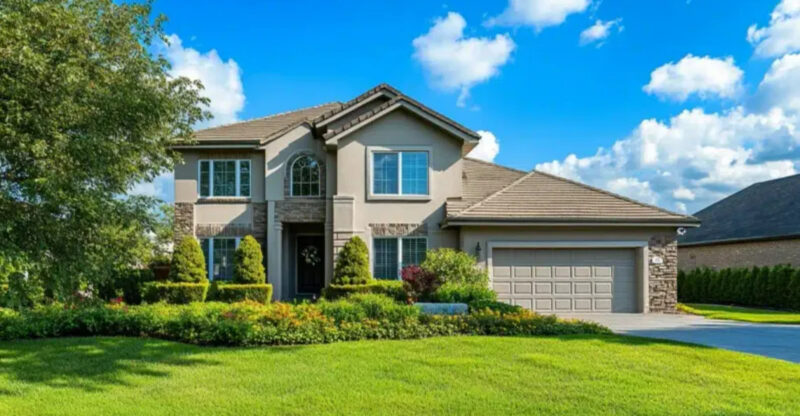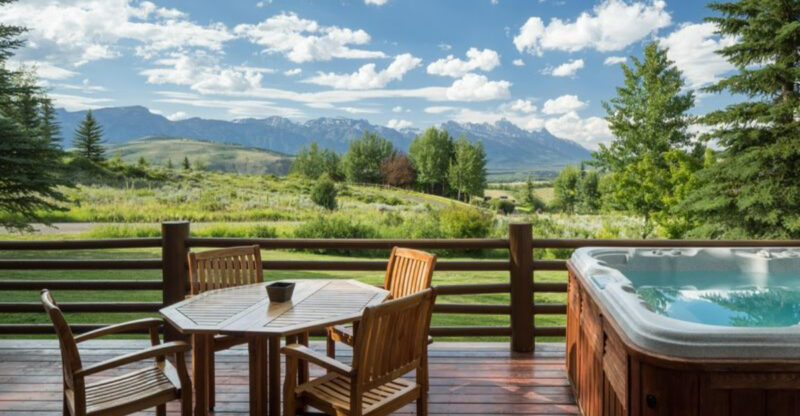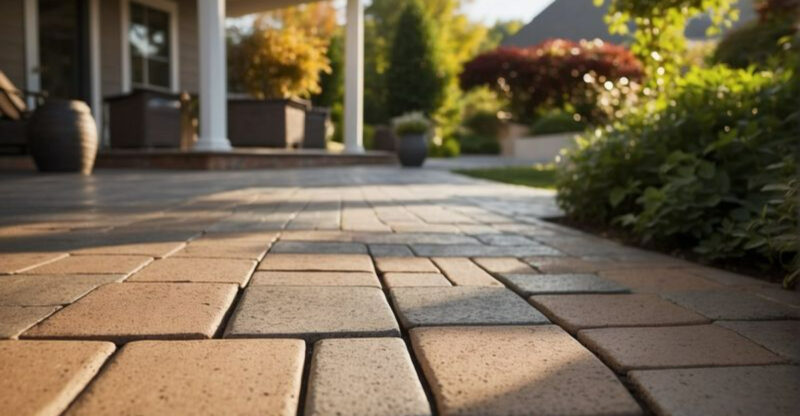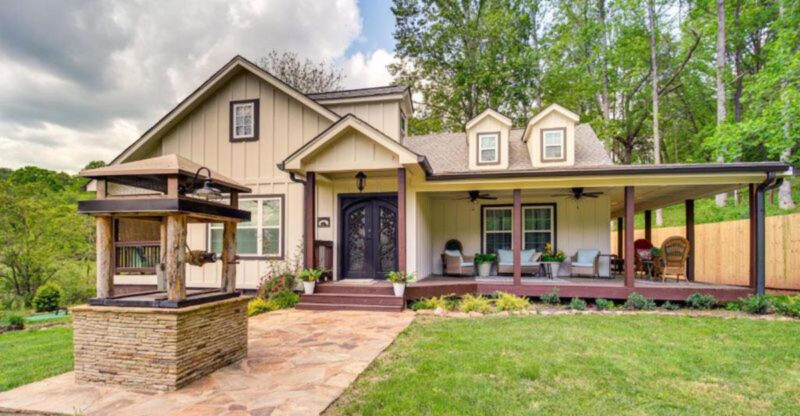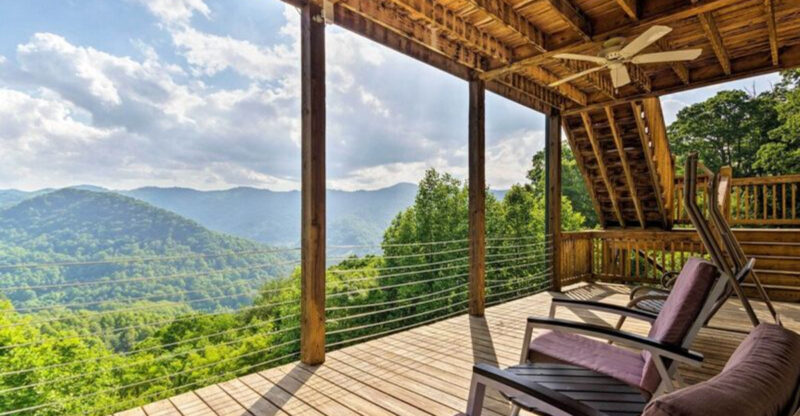21 Landscaping Ideas For People Who Just Don’t Like Yard Work
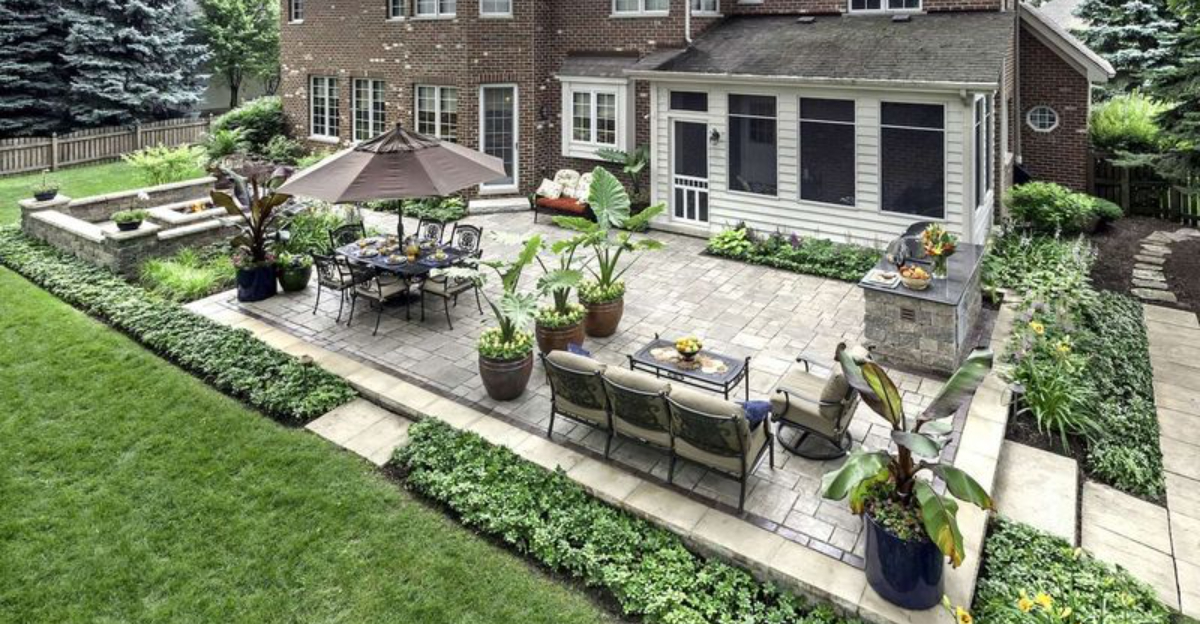
Let’s be real, not everyone dreams of spending their weekends knee-deep in mulch, wrestling weeds, or chasing a runaway lawnmower. If yard work makes you want to fake an injury or “accidentally” forget your gardening gloves, you’re in good company.
But here’s the good news: you don’t need a green thumb (or a full-time gardener) to have a stunning outdoor space. With a few clever tricks and low-maintenance ideas, your yard can look effortlessly amazing, without you breaking a sweat or breaking the bank.
So go ahead, ditch the rake. These time-saving landscaping ideas are all about working smarter, not harder. And, more importantly, giving you more time to sip lemonade on the patio like the backyard legend you are.
1. Install Artificial Turf
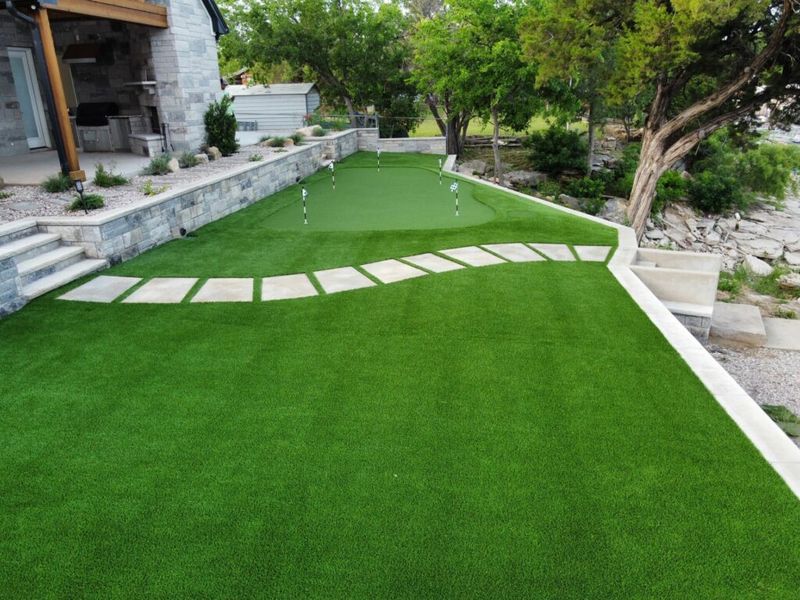
Never mow again! Artificial turf has come a long way from the plastic-looking stuff of the past. Today’s synthetic grass looks amazingly realistic and feels soft underfoot.
Once installed, you’ll save countless hours that would otherwise be spent mowing, watering, and fertilizing. All you need is an occasional rinse with the hose to keep it clean and a quick brush to keep the blades standing tall.
2. Create A Rock Garden
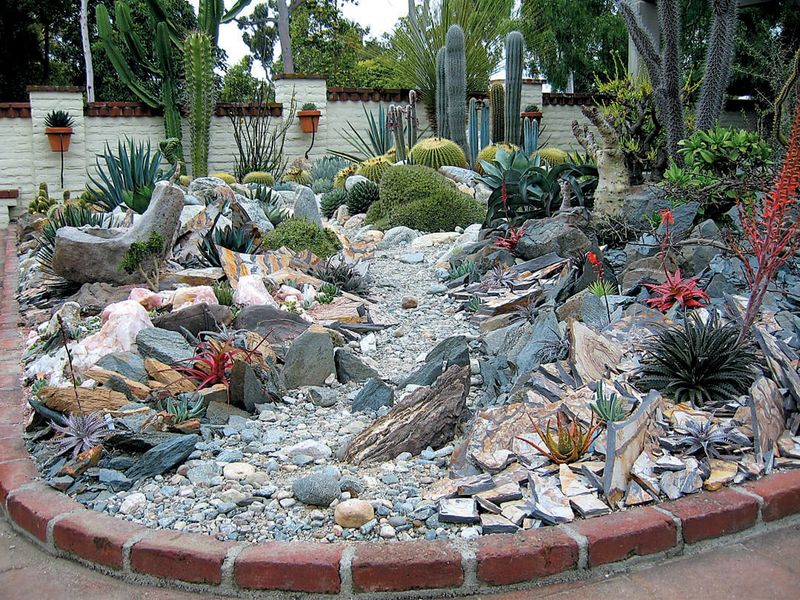
Rocks don’t need watering, trimming, or fertilizing! By arranging different sizes and colors of stones with a few drought-resistant plants, you’ll create an attractive landscape feature that practically takes care of itself.
The beauty of rock gardens lies in their natural appearance and minimal upkeep.
I recommend starting with a weed barrier fabric underneath to prevent unwanted growth between your carefully placed stones.
3. Opt For Native Plants
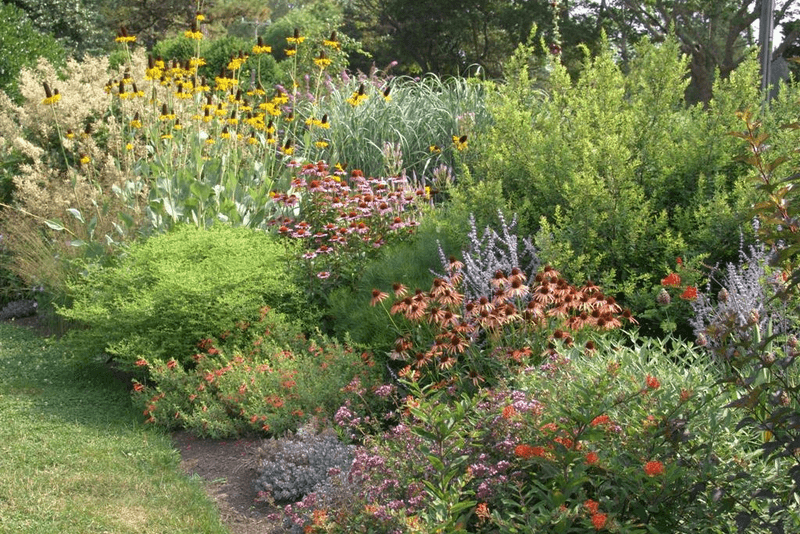
Why fight nature? Native plants have already adapted to your local climate and soil conditions. This means they typically require less water, fertilizer, and pest control than non-native species.
Once native plants are established, they typically require very little upkeep. Check with your local nursery to find out which varieties naturally thrive in your area with minimal care. They’ll also attract beneficial wildlife like butterflies and birds!
4. Mulch Heavily
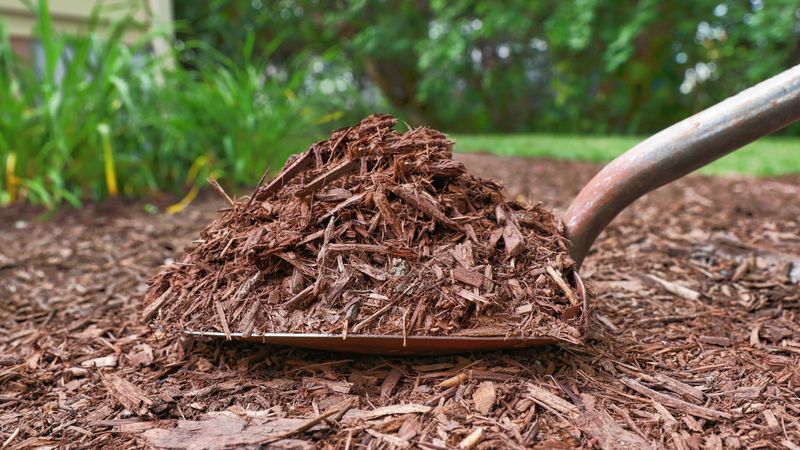
Mulch is your secret weapon against weeds! A thick layer (3-4 inches) of organic mulch like wood chips or bark not only suppresses weed growth but also helps soil retain moisture, reducing how often you need to water.
As a bonus, mulch gradually breaks down to feed your soil. I refresh mine once a year, which is way less work than weekly weeding sessions. Dark-colored mulches tend to look neater longer and show fewer stains from leaves or dirt.
5. Install A Drip Irrigation System
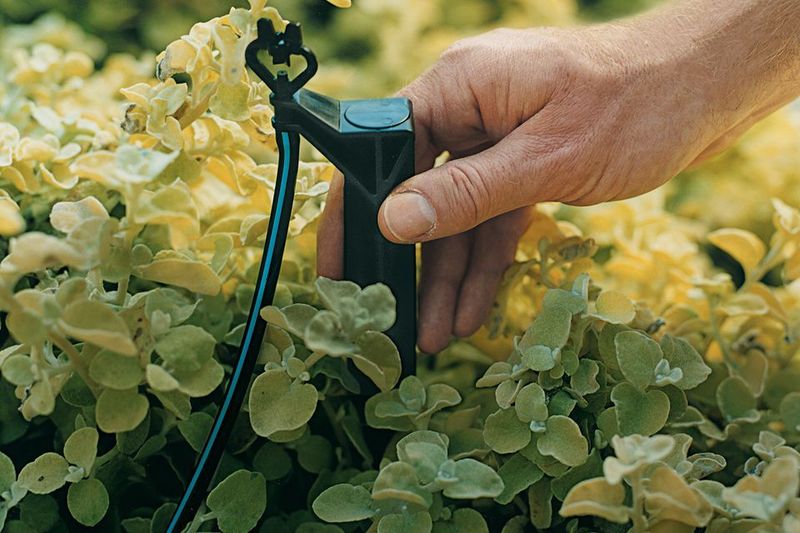
Dragging hoses around is nobody’s idea of fun. A drip irrigation system delivers water directly to plant roots on an automated schedule, saving you time and reducing water waste.
Though there’s some initial setup involved, the long-term benefits are worth it. I love being able to leave for vacation without worrying about my plants.
Also, many systems now connect to smartphone apps, letting you control watering from anywhere!
6. Choose Perennials Over Annuals
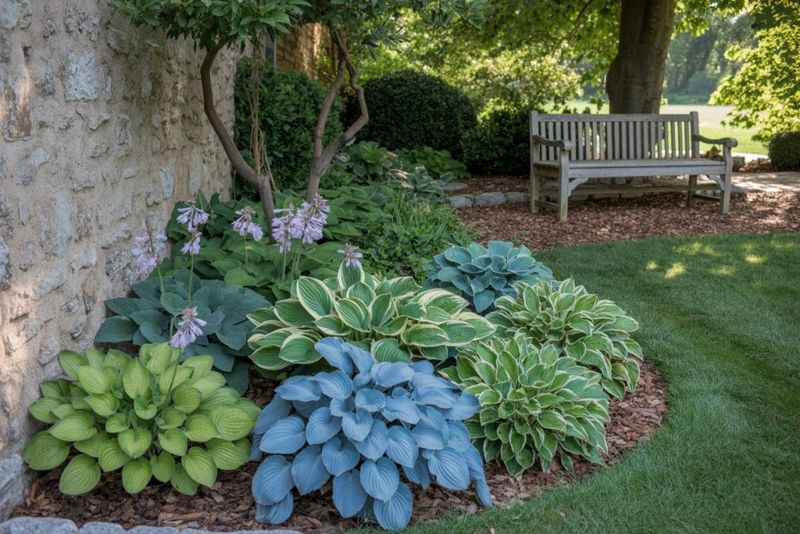
Plant once, enjoy for years! Unlike annuals that need replacing every season, perennials come back on their own year after year. This saves you time, money, and the hassle of replanting.
Daylilies, coneflowers, and black-eyed Susans are some of my favorites that provide reliable color with minimal fuss. For best results, choose varieties suited to your growing zone.
After a few years, many perennials can be divided to fill more space in your garden.
7. Create Defined Bed Edges
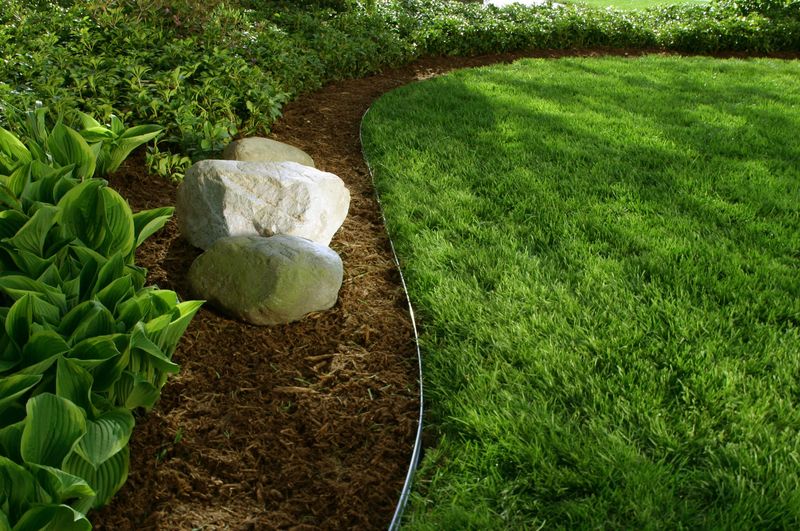
Clean edges make your yard look instantly more polished! Installing permanent edging between lawn and garden beds prevents grass from invading your plantings and creates a neat appearance with minimal effort.
Material options include plastic, metal, stone, or brick. Metal edging is often a top choice for its subtle appearance and strong durability.
Once installed, you’ll save countless hours fighting the never-ending battle of grass creeping into your beds.
8. Embrace Groundcovers
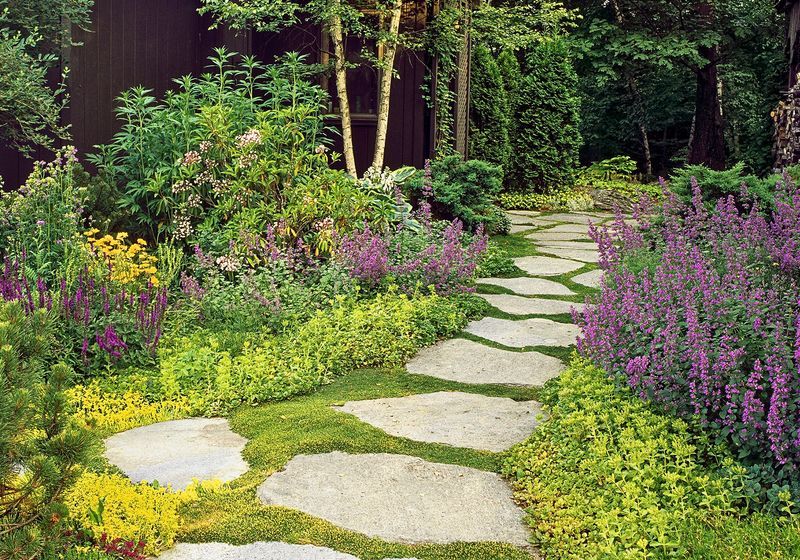
Let plants do the weeding for you! Groundcovers spread to fill empty spaces, preventing weeds from getting established in the first place. They’re perfect for slopes, under trees, or anywhere you want greenery without maintenance.
Some of my favorites include creeping thyme (which smells amazing when walked on), sedum (which thrives in sun), and sweet woodruff (perfect for shade). Most groundcovers need only occasional trimming to keep them from spreading where they’re not wanted.
9. Install A Patio Or Deck
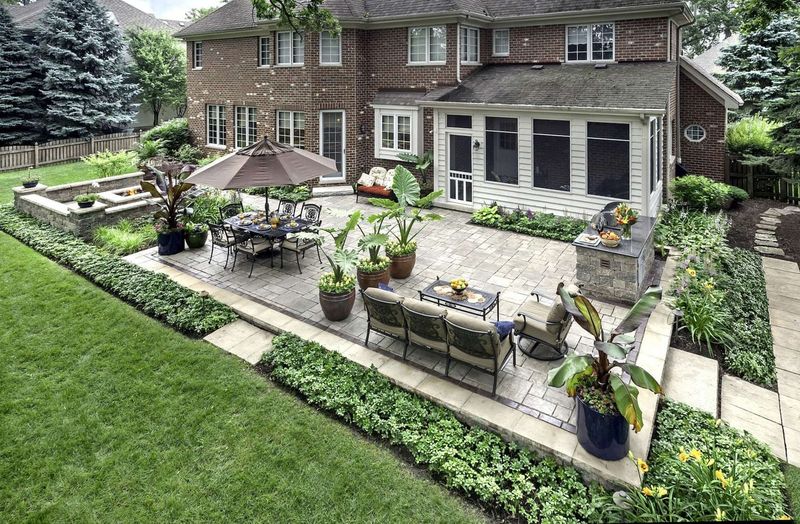
Less lawn means less mowing! Expanding your hardscaped areas with a patio or deck creates usable outdoor living space while reducing the amount of grass you need to maintain.
Modern materials like composite decking or stamped concrete require virtually no upkeep beyond occasional cleaning.
Adding container plants around the edges brings in vibrant color and greenery without the hassle of weeding large garden beds.
10. Use Decorative Gravel
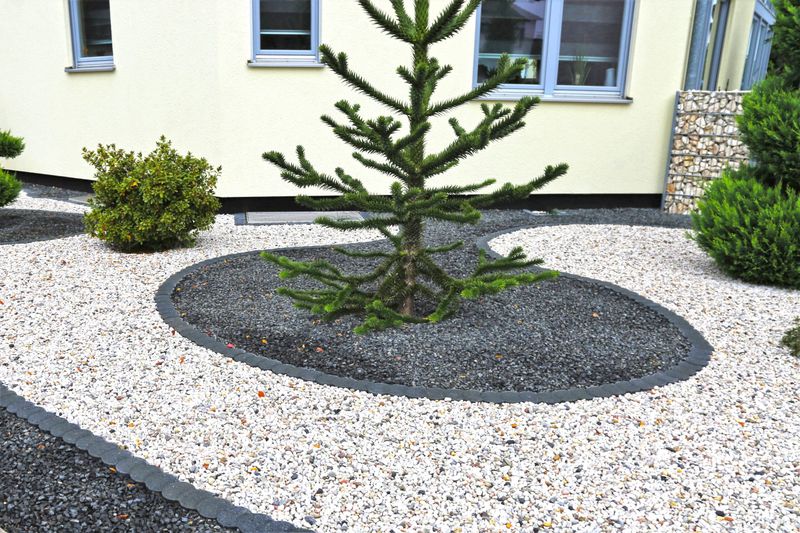
Gravel is the ultimate low-maintenance ground cover! Available in various colors and sizes, decorative gravel can be used for pathways, seating areas, or even as a lawn replacement in dry climates.
Unlike organic mulches, stone doesn’t decompose or need annual replacement. A good trick I’ve picked up is installing landscape fabric underneath, it really helps keep weeds from taking over.
For a more natural look, incorporate large boulders or ornamental grasses among the gravel.
11. Plant Drought-Tolerant Shrubs
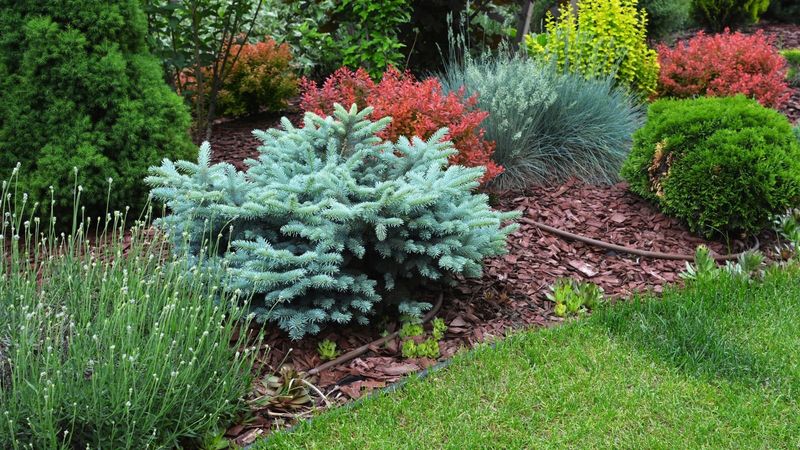
Shrubs provide structure and visual interest with minimal upkeep! Drought-tolerant varieties like juniper, barberry, and spirea need little water once established and require pruning only once a year (if at all).
Grouping similar shrubs together creates a cohesive, attractive look and helps simplify ongoing care and maintenance.
Pro Tip: For even less maintenance, go with slow-growing plant varieties that naturally maintain their shape and won’t quickly outgrow their space, saving you from constant trimming.
12. Create A Xeriscaped Yard
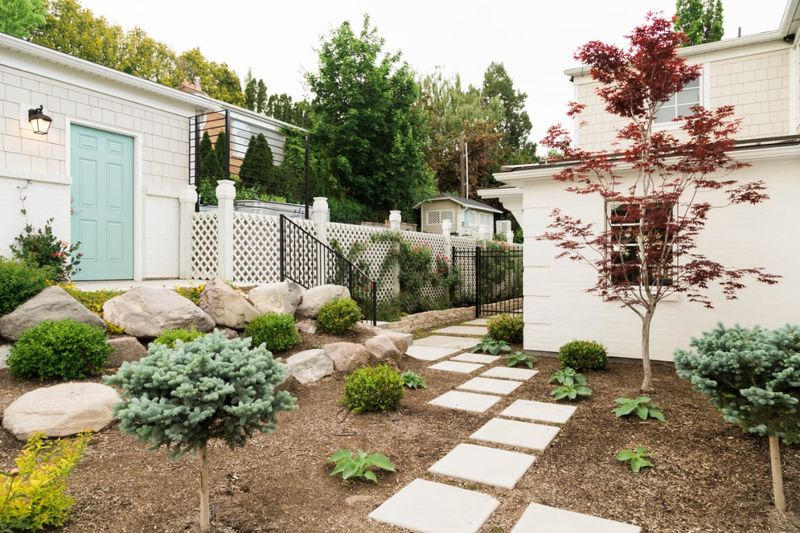
Xeriscaping isn’t just for desert dwellers! This water-wise approach uses drought-tolerant plants, efficient irrigation, and strategic design to create beautiful landscapes that need minimal water and maintenance.
Succulents, ornamental grasses, and native plants are xeriscape superstars.These plants stay striking year-round while requiring very little care.
Group plants with similar water needs together to maximize irrigation efficiency.
13. Install Raised Garden Beds
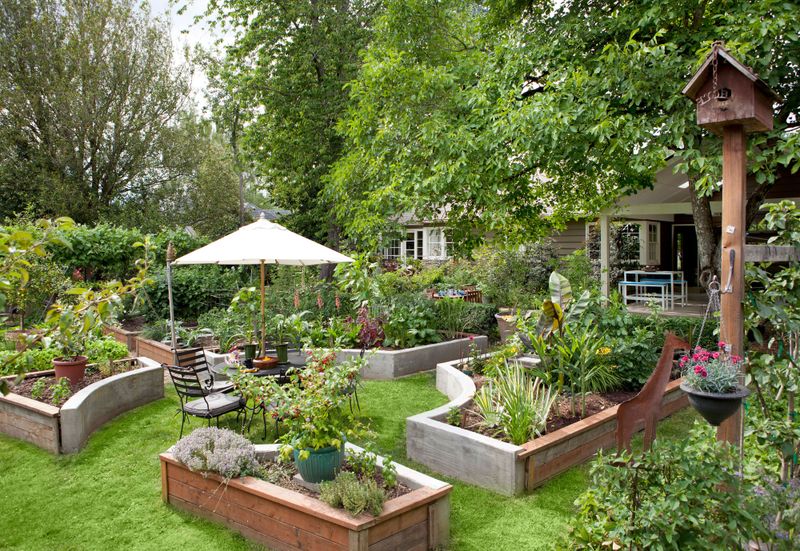
Raised beds make gardening easier on your back and harder on weeds! By elevating your planting areas, you’ll have better control over soil quality and drainage while creating distinct boundaries that prevent lawn grass invasion.
Cedar, composite, or stone materials provide long-lasting durability. Filling raised beds with quality soil significantly reduces weeds compared to in-ground planting.
Plus, the defined edges eliminate tedious trimming around garden borders.
14. Go For Ornamental Grasses
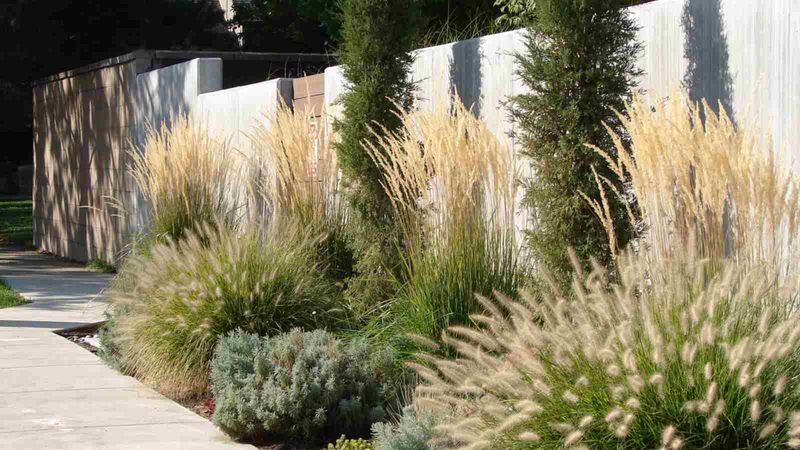
Swaying in the breeze, ornamental grasses add movement and texture to your landscape with practically zero maintenance! Most varieties need cutting back just once a year, typically in late winter.
Unlike fussy plants, these tough performers rarely need watering once established and have few pest problems.
I particularly love miscanthus and feather reed grass for their dramatic height, while blue fescue creates perfect low-growing accents.
15. Use Self-Watering Containers
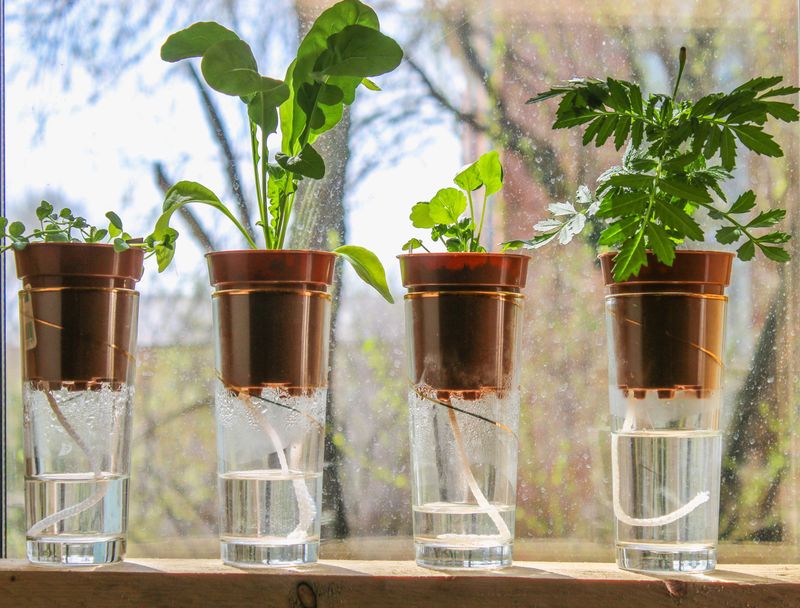
Container gardening lets you enjoy plants without tending a full garden! Self-watering pots take convenience even further by reducing watering frequency from daily to weekly or even less.
My go-to advice is to position these smart containers close to a water source for easy refills. They slowly release moisture, so your plants stay perfectly hydrated with minimal effort.
Choose drought-tolerant plants like succulents, geraniums, or herbs for the ultimate low-maintenance container display.
16. Install Stepping Stones
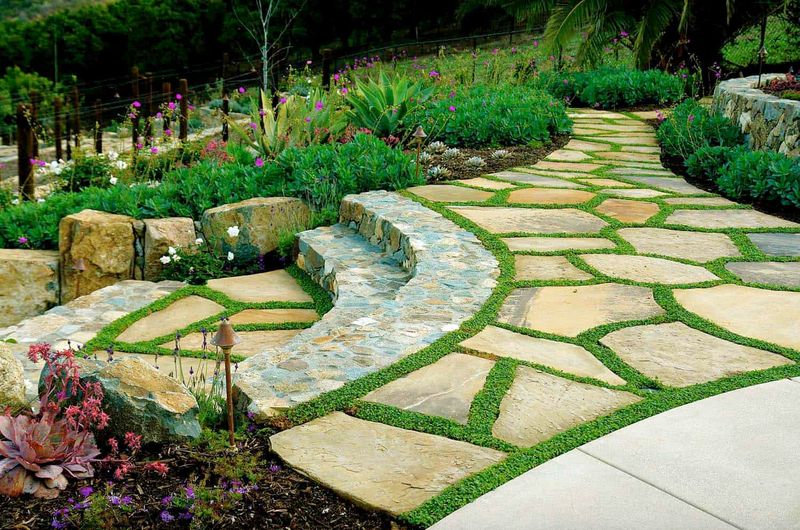
Creating pathways with stepping stones reduces lawn area while adding charm! Space the stones so a mower can pass over them, or place them close together and fill gaps with creeping plants that handle foot traffic.
Natural flagstone, cast concrete, or even repurposed materials like wood slices work beautifully. These pathways brilliantly guide visitors through the garden while cutting out grass in busy spots that usually need constant reseeding.
17. Choose No-Prune Shrubs And Trees
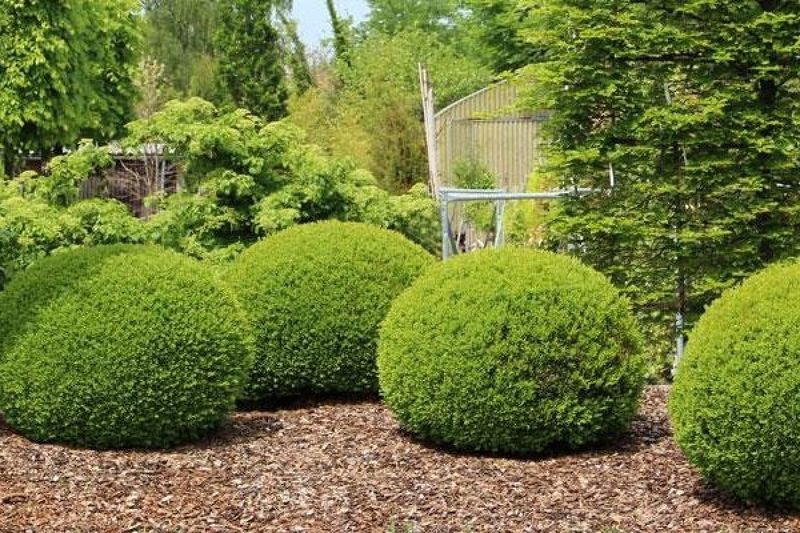
Some woody plants naturally maintain an attractive shape without pruning! Varieties like boxwood ‘Green Velvet’, dwarf Korean lilac, and many viburnums grow slowly and keep their form with minimal intervention.
When shopping, look specifically for dwarf or compact varieties. Trust me, I’ve saved countless hours by selecting plants that won’t outgrow their space.
As an added benefit, these well-behaved plants won’t block windows or walkways, eliminating another common reason for pruning.
18. Create A Meadow Garden
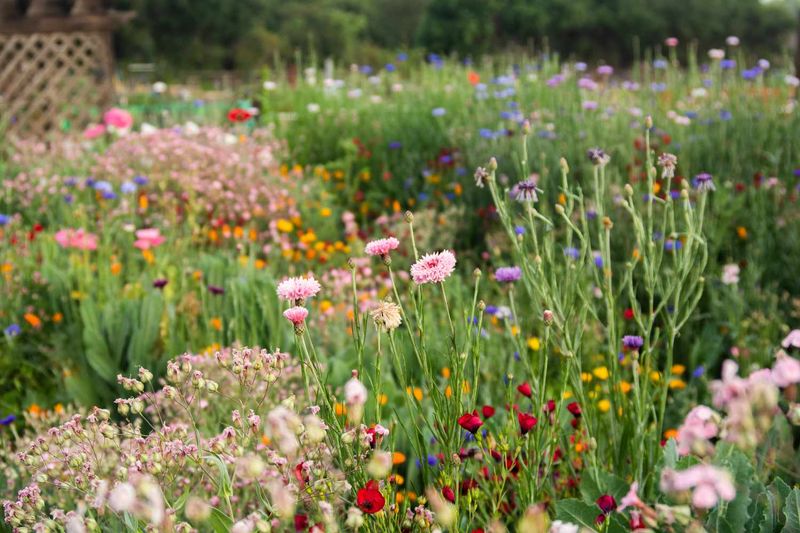
Transform part of your lawn into a wildflower meadow! Once established, meadow gardens require just one cutting per year, typically in late fall after plants have dropped their seeds.
Native wildflowers and grasses attract beneficial insects and birds while creating a naturalistic landscape. I started small with a test patch before expanding.
The key is proper site preparation to reduce weeds before seeding, but the colorful, low-maintenance results are worth the initial effort.
19. Use Landscape Fabric Under Mulch
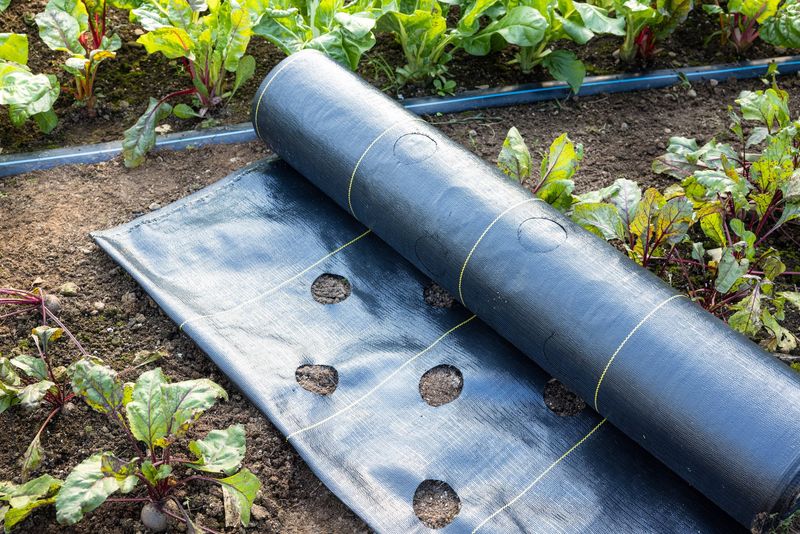
Weed prevention is easier than weed removal! Professional-grade landscape fabric creates a physical barrier that dramatically reduces weed growth when installed under mulch or gravel.
Quality landscape fabric lets water and air reach roots, unlike plastic. Cutting X-shaped openings for plants and covering with mulch creates a neat, polished finish.
Though it’s an investment upfront, I’ve found it pays for itself in reduced weeding time over several seasons.
20. Hire A Robotic Lawn Mower
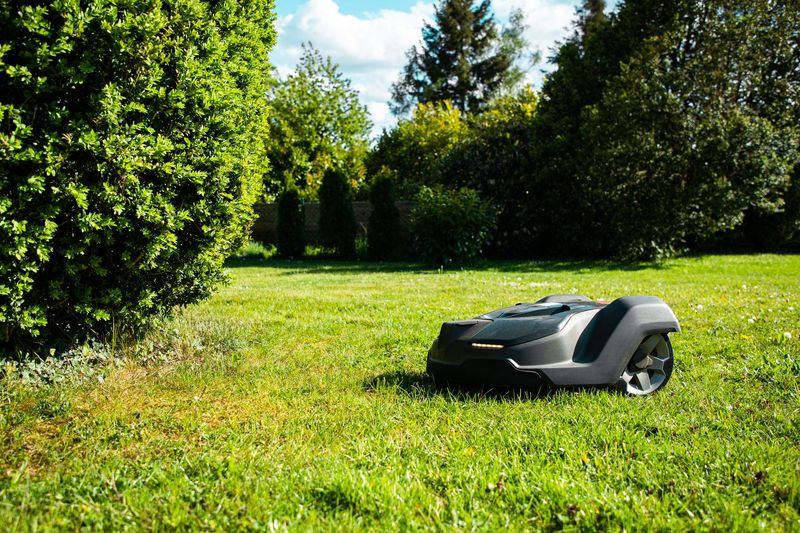
Let technology handle the mowing! Robotic mowers work like automated vacuums but for your lawn, quietly maintaining grass at your preferred height without any effort from you.
Most models can handle moderate slopes and obstacles, returning to their charging station automatically when finished or low on battery.
I was skeptical at first but now love watching my little robot keep the lawn perfect while I relax. The initial setup requires installing a boundary wire, but after that, it’s truly hands-off.
21. Incorporate Hardscaping Features
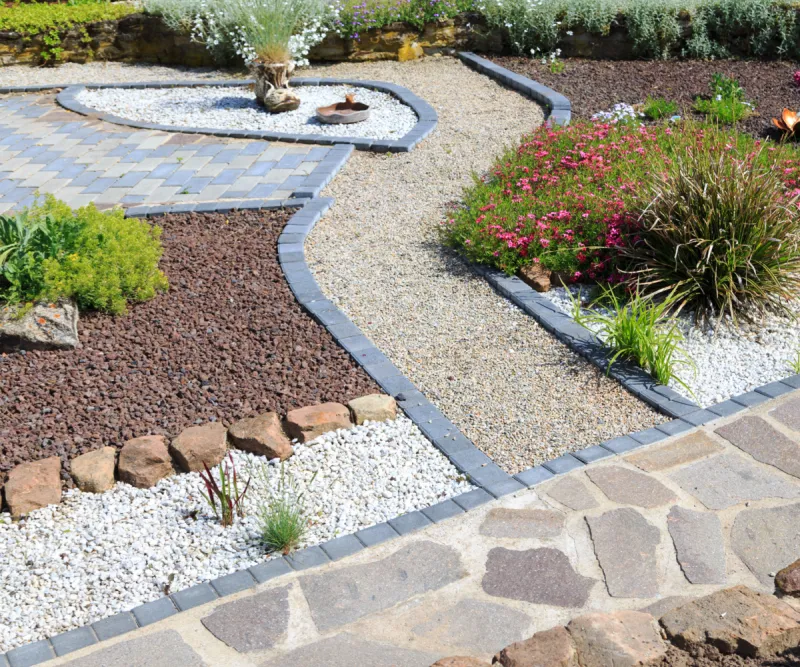
Stone walls, boulders, and decorative structures add interest without adding work! Unlike plants, hardscape elements don’t need watering, pruning, or fertilizing to look their best year after year.
Dry-stacked stone walls or boulder groupings make striking focal points and reduce planting space. Combining smooth river rocks with rough-cut stone adds rich texture and visual depth.
For ultra-low maintenance, avoid wooden features that require staining or painting.

